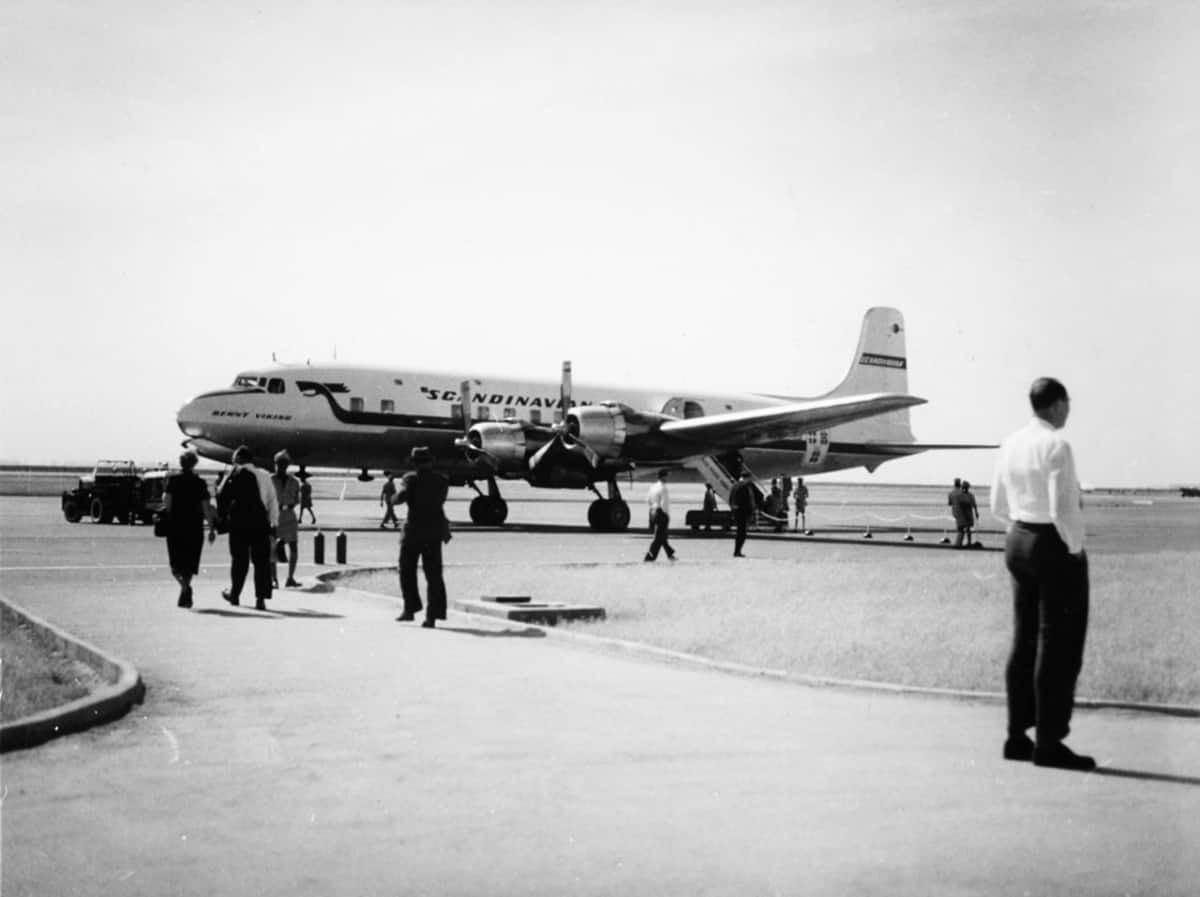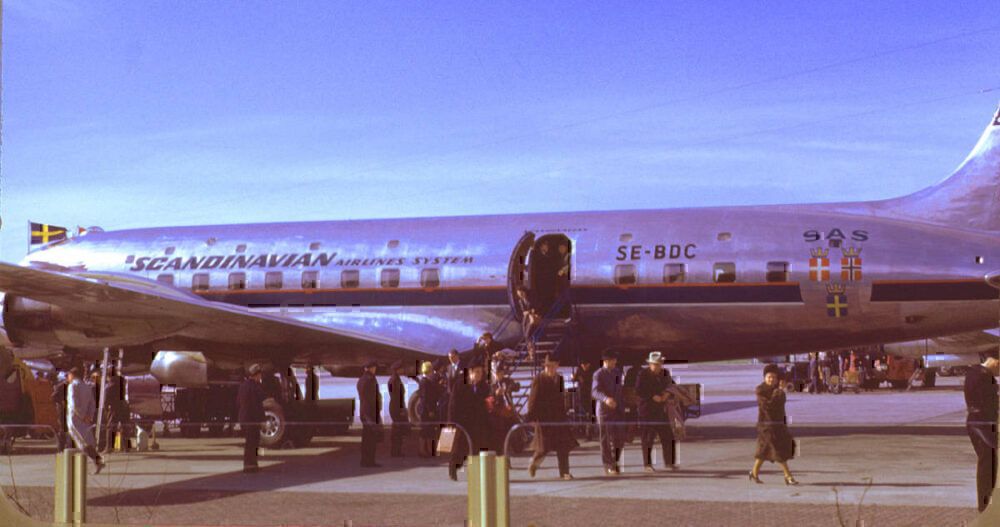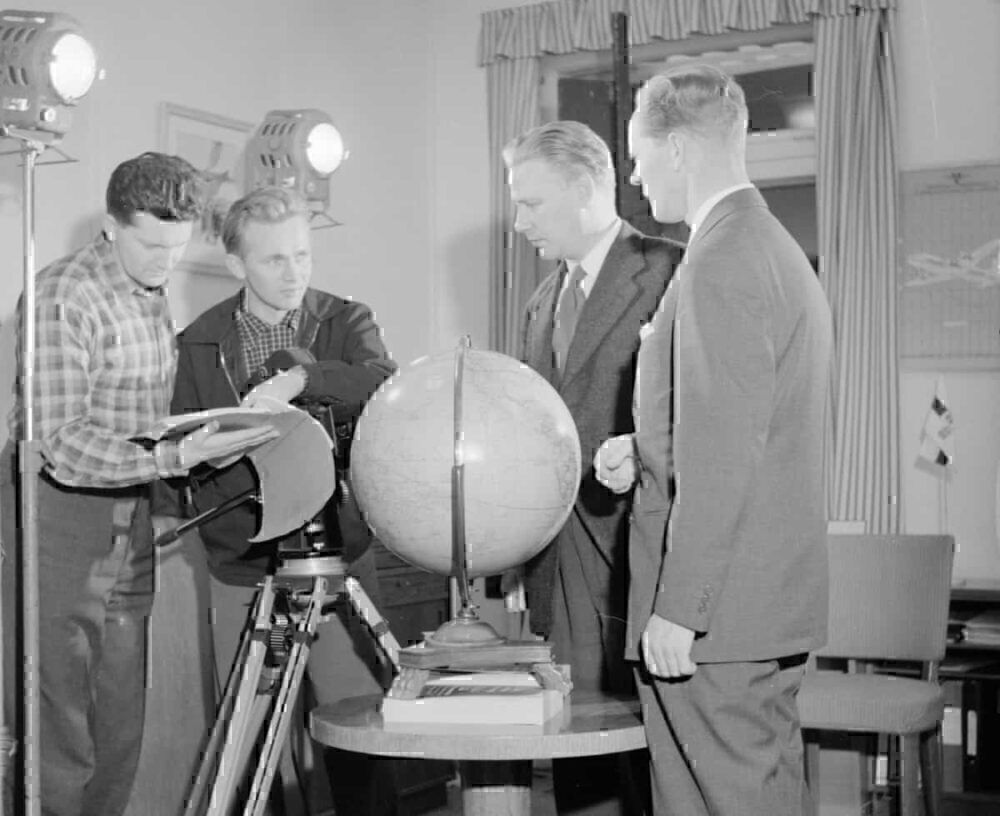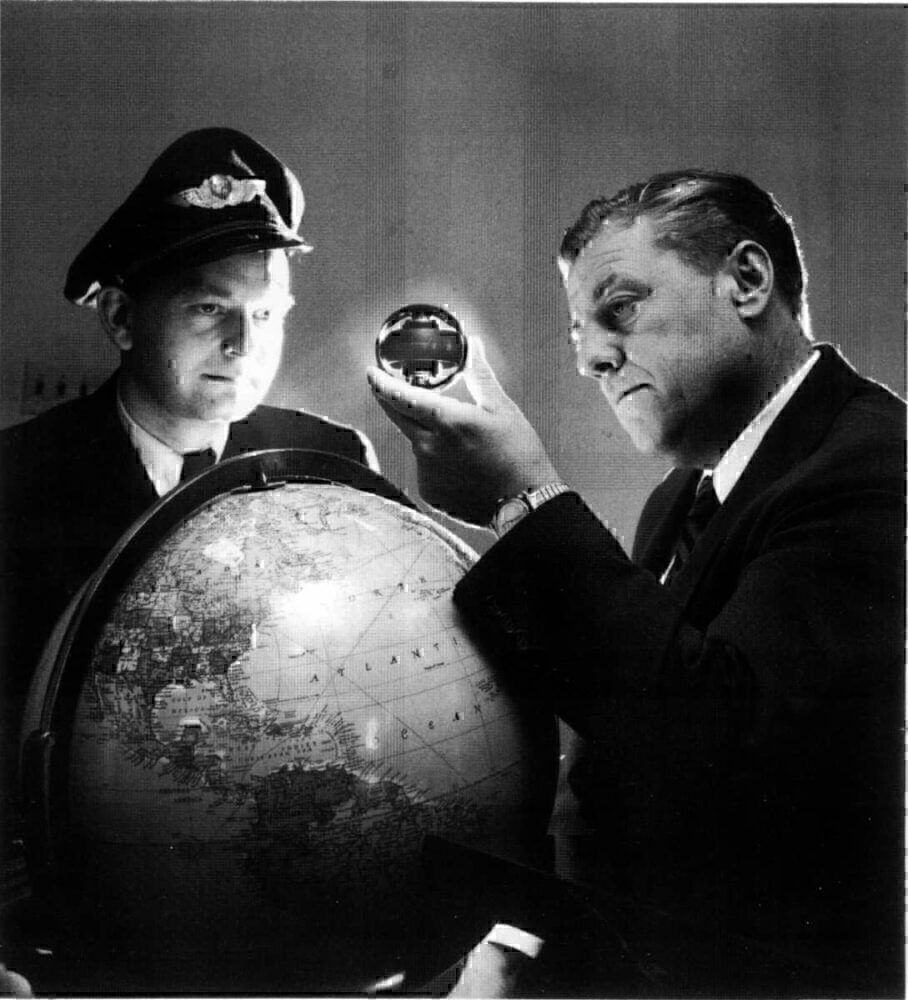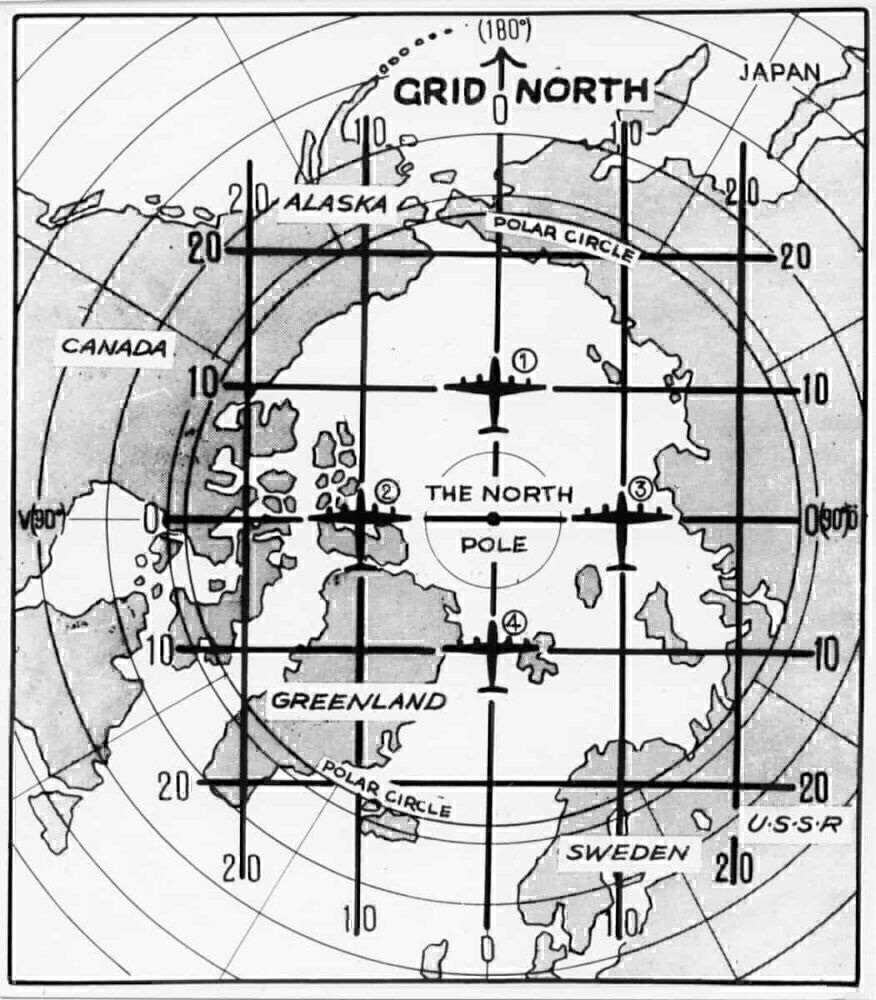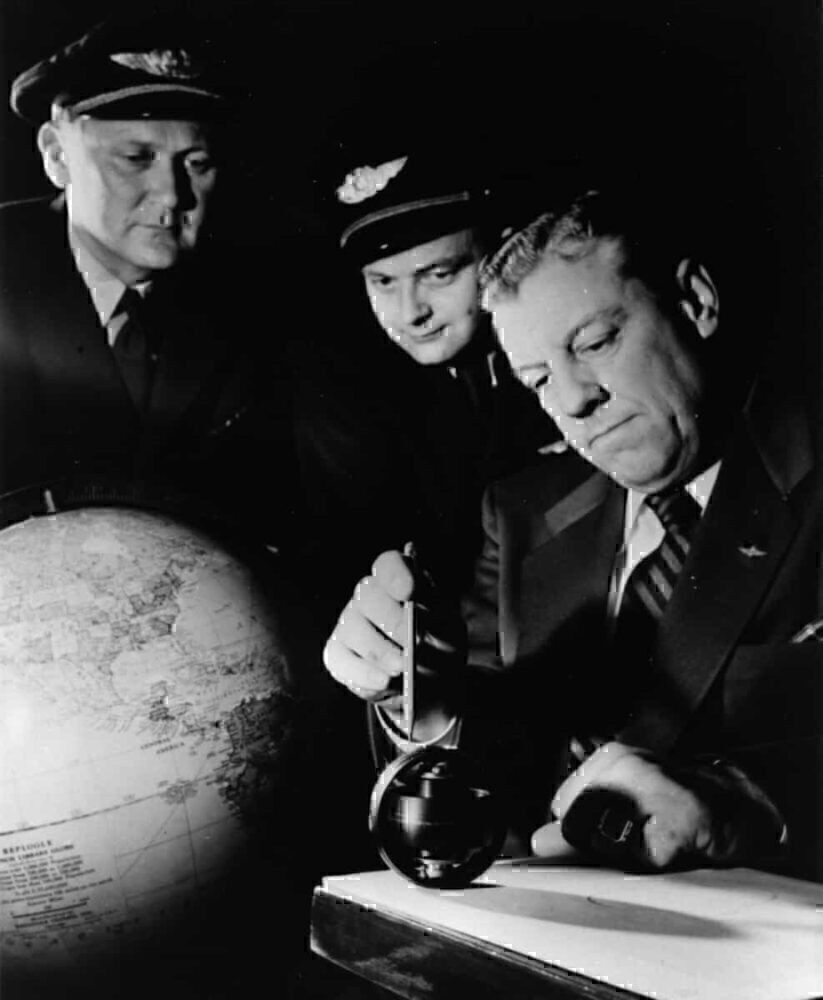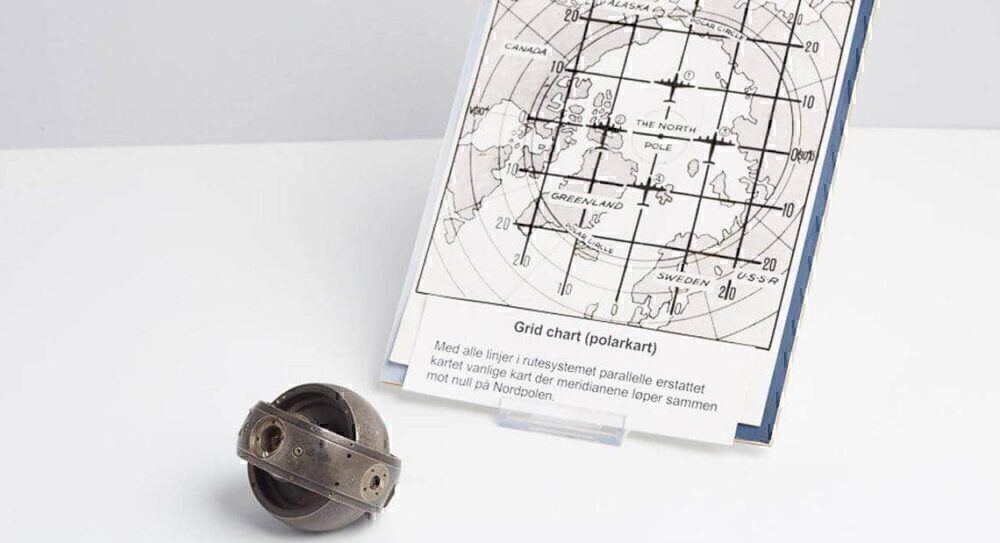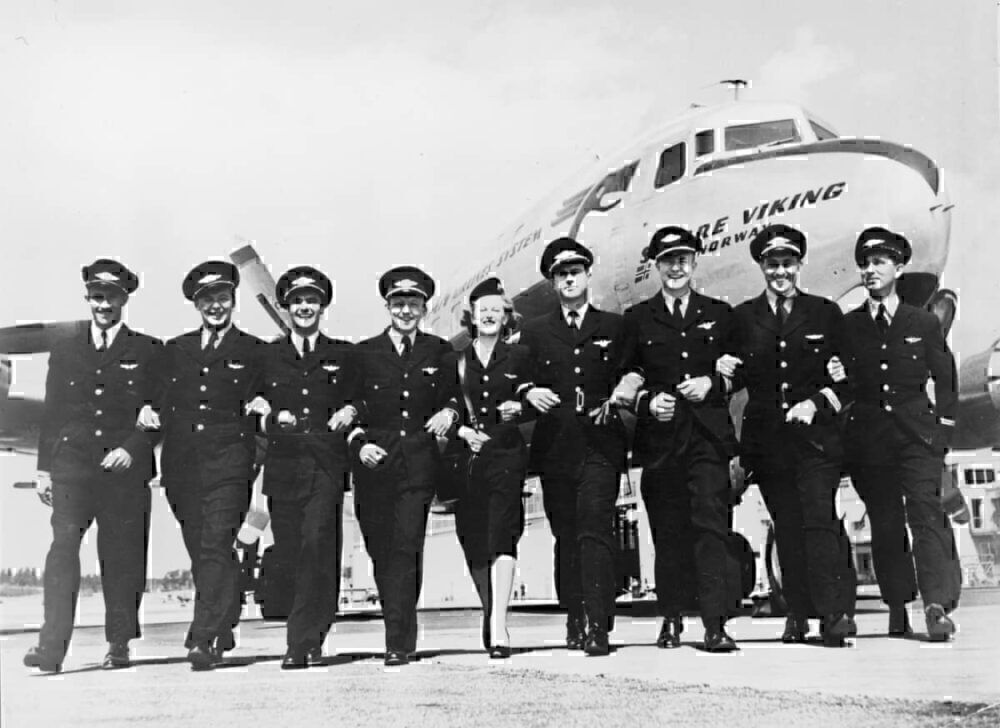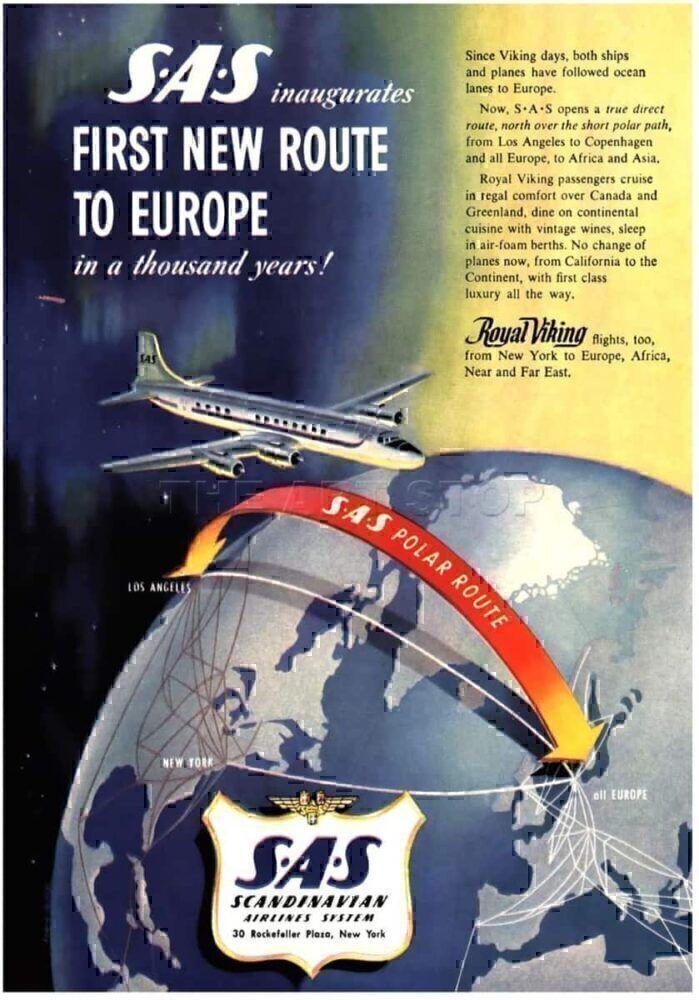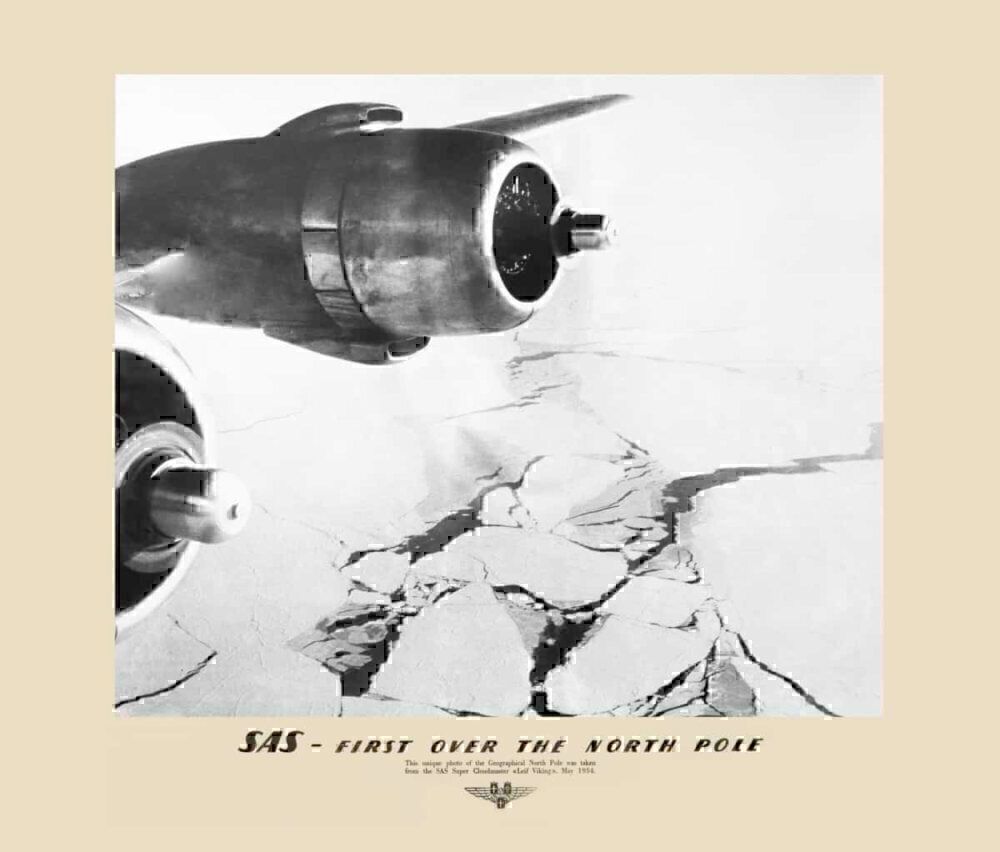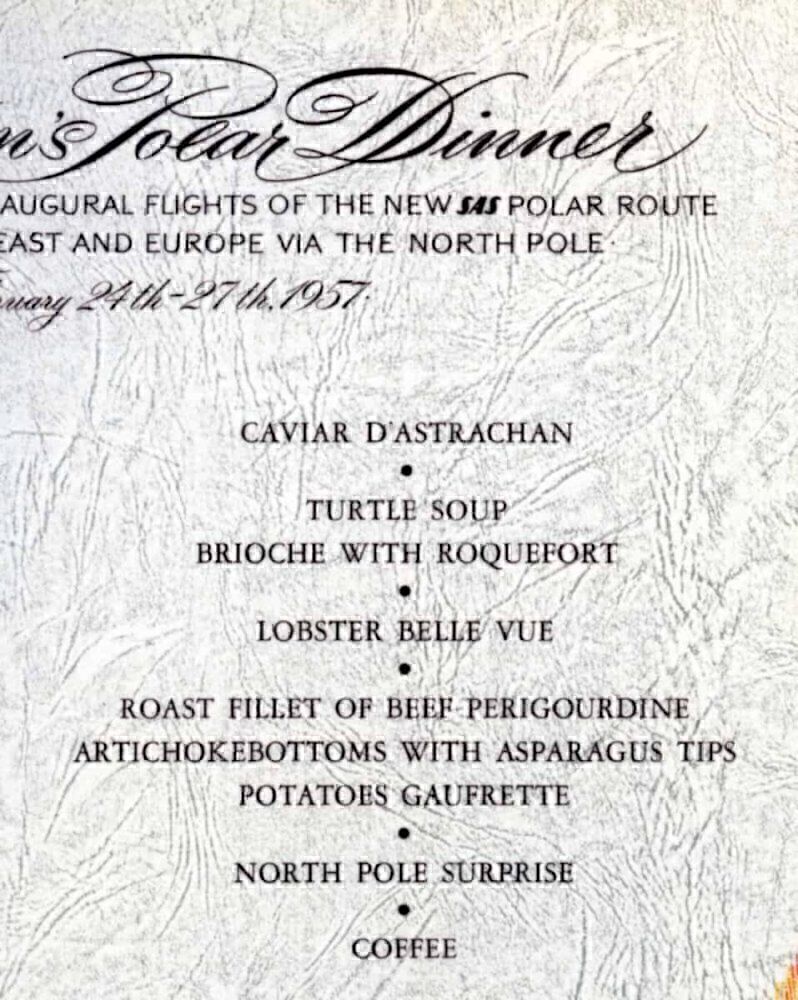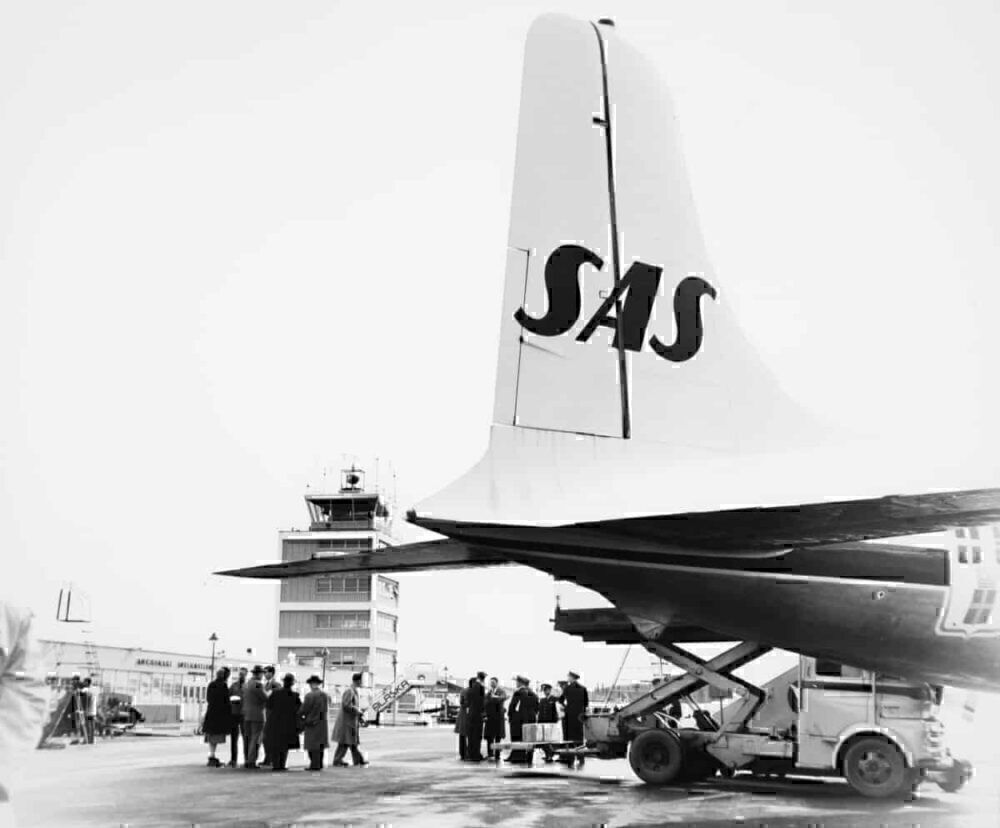Flying polar routes is relatively commonplace today. Any route that connects Asian cities to North America tend to cross the Arctic, and some of the Europe to America flights take this great circle route too. But the very first airline to ever fly this way was Scandinavian Airline Systems (SAS), who established this means of reducing distances thanks to some interesting engineering.
The SAS' short-cut'
Only a matter of weeks after it was established as an airline, Scandinavian airline SAS set its sights on flying transatlantic. In August 1946, it launched its first long-haul route using Douglas DC-4s between Stockholm and New York via Copenhagen, Prestwick and Gander. The flight time was 25 hours.
The easterly European location of SAS' home made it the ideal airline to pioneer new long-haul routes to North America. However, there was another key characteristic of its location that SAS wanted to leverage – it's position to the north.
For decades, seafarers knew that it would be quicker to travel between Europe and North America using a polar route, but given the tricky conditions, none had ever achieved it. SAS, too knew that flying this route could shave hours off their flight times and decided that this short-cut was the future of flying. However, getting it done would not be so easy.
The problem with polar flying
Nowadays, navigating in an aircraft is relatively simple. The proliferation of satellite navigation systems means pilots can find their way to practically any airport, in any conditions. However, back in the 1950s, things were not so simple.
The principal means of navigation used the sun, stars, and moon to determine the aircraft's position, known as astronavigation. However, over the poles, this was tricky. The sextant was inadequate for long periods of each year because the sun is below the horizon for many months at a time. Traditional maps didn't exist with enough detail to be any help, either.
When problems like this existed, airlines frequently relied on compass navigation. However, this too would fail on a polar route. The magnetic north pole was around 1,000 kilometers to the south of the navigational north pole, so compasses would point to the south when they should have been pointing north or would swing back and forth uselessly.
For this reason, SAS needed to come up with a new means of navigating this unexplored region of the globe. To do this, it worked with Bendix Aviation Corporation and a team of aviation experts led by Norwegian World War II veteran and SAS Einar Sverre Pedersen to develop a solution.
Three key solutions
Pedersen and his team, in partnership with the US company Bendix, developed three different key technologies that were to change the face of long-haul aviation forever.
The first was the high precision gyro compass, which remained pointing in the same direction for the entirety of the flight. The next was the Greenwich Grid system, which provided a means for the airline to chart the region by laying down a grid over the polar region, using the Greenwich Meridian as the starting point.
The third, and possibly most groundbreaking development, was the solar compass, a device that used polarized light to see the location of the sun, even when it was below the horizon. Also known as the Pfund Sky Compass, this device started with the work of Dr. A. H. Pfund, who was studying the polarization of scattered light from the sky in 1944. The SAS team and Bendix further improved it for use on these polar flights.
It was November 19th, 1952, when the very first flight took place. The flight used the new DC-6B, a special extended-range version of the Douglas aircraft, christened by the airline "Arild Viking". Twenty-two dignitaries were onboard, as well as Pedersen himself, who was the navigator on the trip. This flight stopped in Edmonton, Canada, and Thule, Greenland, before landing in Copenhagen, a journey that lasted 28 hours.
Between 1952 and 1954, SAS carried out a number of additional flights on three key routes to thoroughly test out the new technology. These were Scandinavia to Los Angeles via Greenland, Scandinavia to Japan via Greenland and Alaska, and Scandinavia to Japan across the Arctic Ocean to Alaska.
The experience gained on these test flights made it possible to open the first regular trans-arctic route to Los Angeles from Scandinavia. Of course, the airline had to push through some challenging red tape to secure the permission of the US to land, but by 1954, it was ready to take off.
The first regular flights
On November 15th, 1954, the SAS DC-6B named Helge Viking was kitted out with Arctic survival gear (just in case) and set off from Copenhagen for Los Angeles. On the route, it would stop in Sondre Stromfjord and Winnipeg. On the same day, taking off from Los Angeles was another DC-6B named "Leif Viking," which was headed in the opposite direction.
According to SAS, the two planes met each other at the north pole to celebrate their accomplishment. The airline also shares that Svenska Dagbladet wrote of the routes that,
“SAS’s Tokyo representative states that the flying time will be shortened to 36 hours when the route comes into regular use, and that all major airlines will soon be using a polar route between Europe and the Far East, and between California and Europe.”
By September 1955, more than 180 flights had been carried out over that route without any problems, according to Pedersen's paper published on the achievement.
The success of the route proved that the Great Circle was indeed better, and many other airlines soon followed on. Canadian Pacific began Vancouver to Amsterdam flights in 1955, and then Pan Am and TWA began west coast USA flights to Paris and London in 1957, using the polar routes to shorten the distance.
Pioneering new routes again, SAS was the first to begin routes to Tokyo in 1957, fling via Anchorage with its new Douglas DC-7Cs. Air France and KLM followed this trail in 1957, KLM also with the DC-7C and Air France with the Lockheed L-1649 Starliner.
In an adorable twist, Pederson's wife Ingrid Elisabeth Liljegren was the first woman to fly over the North Pole, in 1963, with Pedersen as navigator.
Today, the majority of long-haul airlines fly over the north pole when traversing east or west. Many are larger and more prolific than SAS, but it pays to remember that it was this unassuming Scandinavian airline that first made efficient long-haul flying a success.

